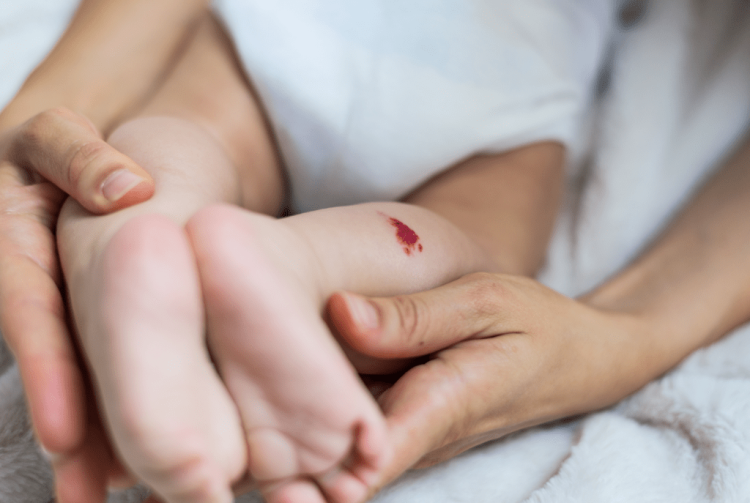Unveiling the Canvas: Exploring Types of Birthmarks and Their Intriguing Meanings

Birthmarks, those unique and often mysterious skin formations present at birth or shortly thereafter, have long captivated human curiosity. While some may view them as mere skin quirks, others attribute profound meanings to these distinctive features. In this exploration, we delve into the various types of birthmarks and the fascinating interpretations associated with them.
Understanding Birthmarks:
Birthmarks are pigmented or vascular irregularities on the skin, appearing shortly after birth or during the first few weeks of life. While they are generally harmless, birthmarks can vary in size, shape, color, and location on the body. The two primary categories of birthmarks are pigmented and vascular.
Types of Birthmarks:
- Café-au-lait Spots: Café-au-lait spots are characterized by light brown or coffee-colored pigmentation on the skin. These birthmarks can vary in size and are usually oval-shaped. While they are generally benign, the presence of multiple café-au-lait spots might indicate an underlying genetic condition, such as neurofibromatosis.
- Mongolian Spots: Commonly found in infants with darker skin tones, Mongolian spots are blue-gray birthmarks that resemble bruises. They often appear on the lower back or buttocks and typically fade as the child grows older.
- Port-Wine Stains: Port-wine stains are a type of vascular birthmark characterized by red or purple discoloration. These marks result from abnormal blood vessel development and can vary in size. While they are generally harmless, larger port-wine stains may be associated with certain syndromes.
- Strawberry Hemangiomas: Strawberry hemangiomas are bright red, raised marks caused by an overgrowth of blood vessels. They often appear shortly after birth and may grow rapidly in the first few months before gradually shrinking and disappearing. These birthmarks are usually harmless, but medical attention may be required if complications arise.
- Stork Bites (Salmon Patches): Stork bites, also known as salmon patches, are flat, pink, or red marks often found on the back of the neck or between the eyes. These birthmarks are caused by dilated blood vessels and usually fade as the child grows.
- Congenital Moles: Congenital moles, or nevi, are pigmented birthmarks that vary in size and color. While most moles are harmless, larger congenital moles may require monitoring for potential health risks, such as melanoma.
- Vascular Malformations: Vascular malformations encompass a range of birthmarks caused by abnormal blood vessel development. These may include capillary malformations, venous malformations, and lymphatic malformations. The severity and impact on health depend on the type and location of the malformation.
- Linear Epidermal Nevus: Linear epidermal nevi are streaks or bands of raised, pigmented skin. These birthmarks can vary in size and may be associated with other developmental abnormalities. Their appearance is due to a genetic mutation occurring during embryonic development.
Meanings and Folklore:
Throughout history, birthmarks have been assigned various meanings and interpretations. Different cultures and societies attribute both positive and negative connotations to these unique features.
- Karmic Imprints: In some spiritual and mystical beliefs, birthmarks are thought to be karmic imprints from past lives. It is believed that the location and type of birthmark may provide insights into a person’s past experiences.
- Symbolism of Port-Wine Stains: Port-wine stains, with their deep red hue, have been associated with romantic and passionate personalities in some cultures. Conversely, other societies may view them as a sign of misfortune or a past sin.
- Mystical Protection: Some cultures believe that birthmarks serve as protective symbols, guarding individuals from evil spirits or negative energies. Birthmarks are thought to be a mark of divine protection, ensuring the well-being of the person carrying the mark.
- Astrological Connections: In certain astrological traditions, birthmarks are believed to be linked to planetary influences. The position of a birthmark on the body may be seen as corresponding to specific astrological signs, offering insights into a person’s character or destiny.
Conclusion:
Birthmarks, with their diverse forms and meanings, continue to intrigue and captivate us. While modern science provides explanations for their physical origins, the cultural and spiritual interpretations add an extra layer of fascination. Whether seen as unique identifiers, karmic imprints, or protective symbols, birthmarks remain a timeless aspect of human diversity and individuality.
-
What are birthmarks, and how do they form?
- Birthmarks are pigmented or vascular irregularities on the skin that appear shortly after birth or during the first few weeks of life. They can be caused by an overgrowth of blood vessels (vascular) or an accumulation of pigment-producing cells (pigmented).
-
How common are birthmarks?
- Birthmarks are relatively common, with the majority of people having at least one. The prevalence varies depending on the type of birthmark and ethnic background.
-
What are the main types of birthmarks?
- The main types of birthmarks include pigmented birthmarks like café-au-lait spots, Mongolian spots, and congenital moles, as well as vascular birthmarks like port-wine stains, strawberry hemangiomas, and stork bites.
-
Are birthmarks hereditary?
- While the exact cause of birthmarks is not always clear, some types may have a genetic component. In certain cases, the tendency to develop birthmarks can run in families.
-
Can birthmarks change over time?
- Some birthmarks, particularly vascular ones like strawberry hemangiomas, may change in size and appearance during the first few months or years of life. Others, like congenital moles, may remain relatively stable.
-
Do birthmarks pose any health risks?
- In the majority of cases, birthmarks are harmless and do not pose health risks. However, certain birthmarks, such as large congenital moles, may require monitoring for potential complications like melanoma.
-
What is the significance of café-au-lait spots?
- Café-au-lait spots are light brown or coffee-colored pigmented birthmarks. While they are generally benign, the presence of multiple café-au-lait spots may indicate an underlying genetic condition, such as neurofibromatosis.
-
Are there cultural or spiritual meanings associated with birthmarks?
- Yes, various cultures and spiritual beliefs attribute meanings to birthmarks. Some see them as karmic imprints, symbols of protection, or linked to astrological influences. The interpretations vary widely across different societies.
-
Can birthmarks be removed or treated?
- In some cases, birthmarks may fade or shrink naturally over time. However, certain birthmarks, especially vascular ones like port-wine stains, may require medical intervention such as laser therapy for removal or reduction.
-
Do birthmarks have astrological connections?
- In certain astrological traditions, birthmarks are believed to be linked to planetary influences. The position of a birthmark on the body may be associated with specific astrological signs, offering insights into a person’s character or destiny.
-
Do birthmarks have any impact on a person’s personality or destiny?
- While cultural and spiritual beliefs may attribute meaning to birthmarks, there is no scientific evidence supporting a direct correlation between birthmarks and personality traits or destiny.
-
Can birthmarks be prevented?
- In most cases, birthmarks cannot be prevented as they often result from natural developmental processes. Understanding the types and causes of birthmarks can help individuals manage any concerns they may have about their appearance.
-
Are there support groups for individuals with prominent birthmarks?
- Yes, there are support groups and online communities where individuals with birthmarks and their families can connect, share experiences, and seek advice or emotional support.
-
How do healthcare professionals determine if a birthmark is cause for concern?
- Healthcare professionals assess various factors, including the type, size, and location of the birthmark. Regular monitoring and, in some cases, medical imaging or biopsy may be recommended to rule out potential health risks.





